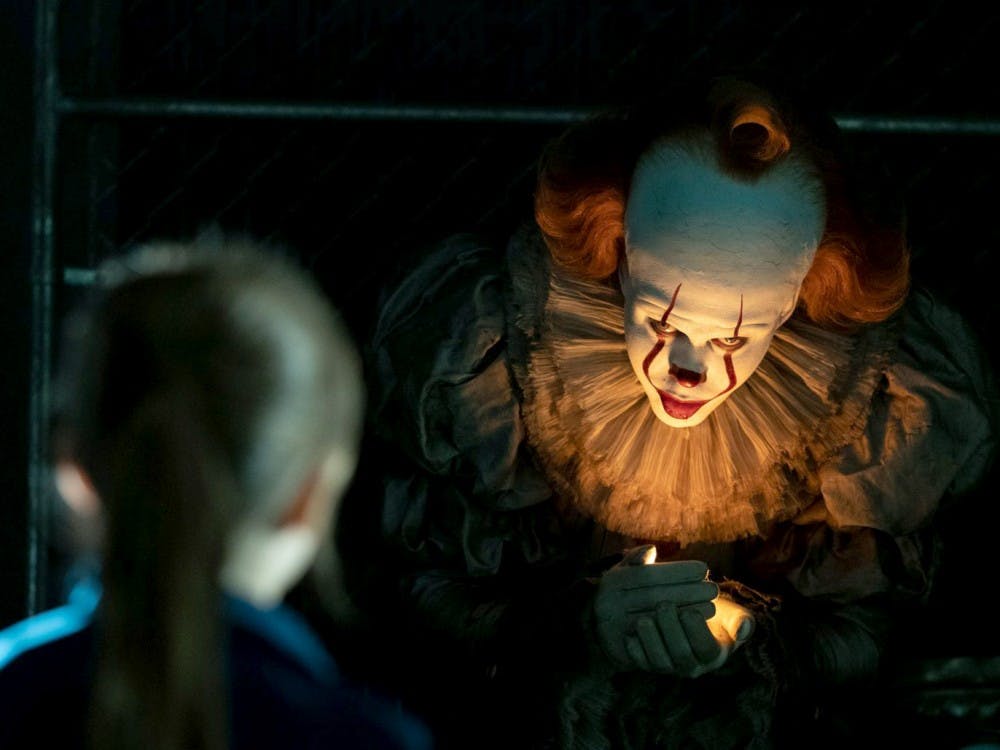Twenty-seven years after the terrifying events of “It” (2017), the Losers Club returns to Derry for a final showdown with Pennywise (Bill Skarsgard) in the recently-released “It Chapter Two.” The film features incredible performances, a phenomenal character driven story and stunning set pieces and special effects — but it’s just not that scary.
At the heart of the film, “It Chapter Two” is an exploration of childhood trauma and memory, and it follows the effects of that trauma into adulthood through the personal narratives of the grown-up “Losers.” The Losers Club may have survived the horrors of their individual childhoods, but they suffered a great deal. The film delves into their struggle with survivor’s guilt, repressed memories and unresolved anxieties. At the start of the film, nearly all of the characters have forgotten the events from the summer of 1989, and though they now lead successful adult lives, they are each haunted by memories they no longer have. The group’s return to Derry and confrontation with It opens old wounds, reigniting forgotten fears and forcing them to confront their past.
The adult cast of “It Chapter Two” is not only spot-on in its resemblance to the characters’ younger counterparts, but it also perfectly captures their spirit. Notable in the cast are Jessica Chastain as Beverly Marsh, James McAvoy as Bill Denbrough and Bill Hader as Richie Tozier. Chastain’s personal confrontations with It are some of the most emotionally charged sequences in the film, showcasing the tragedy inherent to the character while still maintaining her strength. McAvoy’s depiction of Bill’s overwhelming guilt for his brother’s death drives much of the movie and his increasing desperation raises the emotional stakes. Hader steals the show, highlighting every scene he’s in with a magnetic charisma and heartfelt performance that serves as the heart of the film.
The original Losers Club also returns to their roles for various flashback scenes, each maintaining the sense of childhood wistfulness that carried the heart of the first film, while adding new depth to their characters. Along with them is Bill Skarsgard, reprising his role as Pennywise, who adds personal vendetta to his unnerving portrayal of the creature.
The sequel makes use of its much larger budget, adding intricate sets and an increased use of CGI to give It more unearthly forms and gruesome kills. The editing and cinematography blends the narratives of the children and adults seamlessly, using lighting and camera placement to highlight the differences between the adult and child worldview while still showcasing their shared qualities. The nearly three hour runtime of the film never feels too long; the pace of the film is kept consistent and engaging throughout.
Despite this, the film falls short of horror. Scenes of tension are often punctuated with jokes and frivolity, and the over-reliance on graphic murders removes much of the suspense and dread of the original. The focus on adults also relieves tension; it’s easier for audiences to stomach the idea of an adult being in jeopardy as opposed to children. Pennywise is as creepy as ever, but scenes focusing on his performance alone are few and far between, and the film does not take full advantage of his presence. In fact, there are scarcely any moments in the movie that reach past jump-scares or a CGI gimmick.
The lack of truly scary moments is because the film’s core narrative is not that of a horror film, but of a coming of age story. The Losers Club must each confront their past to overcome It — which has evolved from a more traditional manifestation of fear to a representation of individual guilt and personal horror. Rather than presenting a traditionally scary story, the movie tells a tale of maturation and growth, featuring characters with fears more complicated than a painting or a zombie. The comedic moments break the tension in a scene and provide an insight into the growing bravery of the characters. The results are less scary, but much more narratively satisfying, giving us a story which forces our characters to accept their pasts, both good and bad.
Although the film may not be that frightening, it doesn’t need to be. The story is powerful and emotionally resonant. In a world with increasing violence and tragedy, it often seems that the only thing we can do is ignore and forget the painful moments of the past. The journey of the Losers Club teaches us that forgetting our past neither changes nor solves it — only in confronting painful memories can we move on. “It Chapter Two” is not about the fear itself, it is about the power that comes from moving past it.
Get The Chronicle straight to your inbox
Sign up for our weekly newsletter. Cancel at any time.

